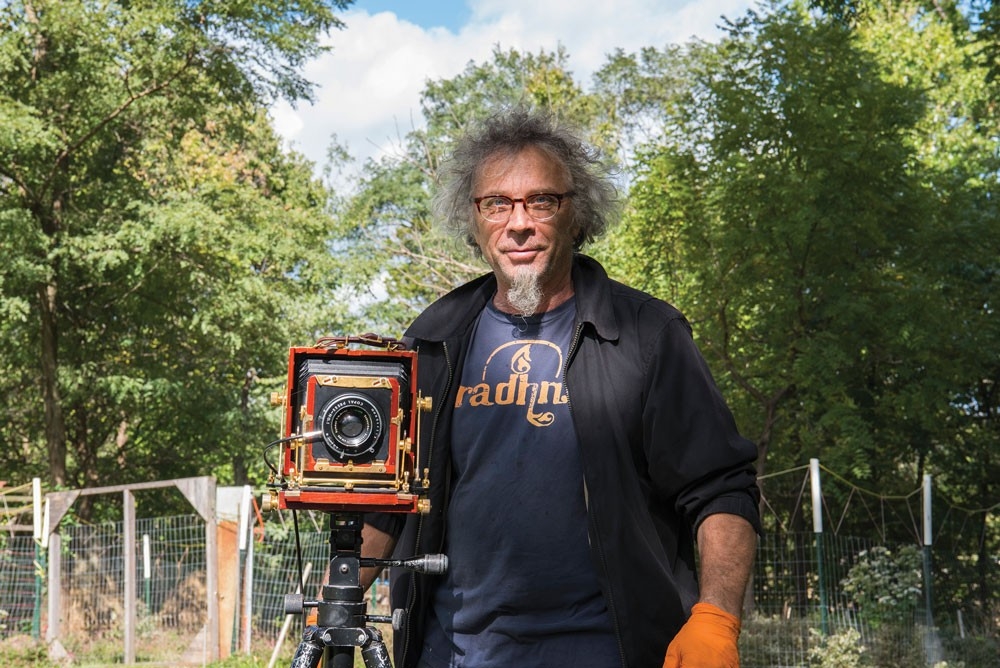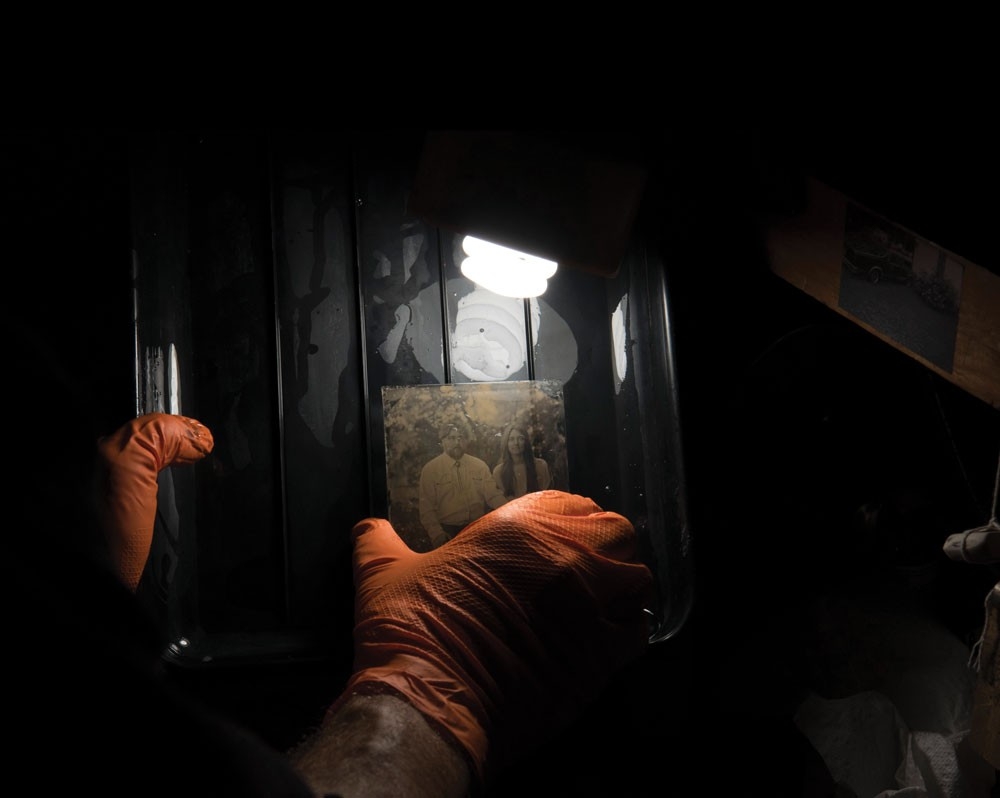





Staying Focused
Though established, his career hasn’t been immune to industry changes, with music work tapering off in recent years. But Wilson’s love for making pictures is resilient, and he’s found new ways to explore his passion, branching into teaching at a Cincinnati-based arts center and, in various ways, allowing himself to become a student again.“
In the last, specifically, year and a half or two years, a significant part of my time has been involved with Manifest Drawing Center in Madisonville,” he says, adding he’d become familiar with the center through drawing classes Marilyn takes there. A few years back, after acquiring darkroom equipment from a program shuttered elsewhere, he approached Manifest with the idea of setting up a darkroom there. “I’d been imagining a sort of community darkroom where this analog process could be taught and practiced,” he says. After the employee initially put in charge left town for another opportunity, Wilson took over and has spent much of the past year helping the fledgling program survive. “I would love to see it prosper.”
Wilson remains in demand as a fine artist, too. His show, “They Knew Not My Name and I Knew Not Their Faces,” is on display at the Public Library of Cincinnati Hamilton County’s Main Branch through the end of 2018. The exhibit and companion book, presented by FotoFocus, are a collection of black-and-white portraits made during the past two years that involved Wilson erecting a portable studio and having strangers pose for a picture. And a recent show at the Cody Center in Kerrville, Texas, entitled “Shirt for a Ghost” featured a number of photographs that stretch back to his time as a student at NKU.
And he’s always looking for something to learn. A handful of years ago, Wilson, with his son, Henry, started producing performance videos by bands he’s worked with, and he’s currently learning collodion-on-glass imaging techniques that date back to the earliest days of photography.
“I’ve become sort of a student of the wet plate, a process from the 1850s that’s taken me way down to the beginner level,” he says. “Part of me feels like I’m just learning photography in that sense.”All of which underscores one of Wilson’s greatest skills as a photographer and, in the greater scheme, a person: perspective. Despite a career that’s positioned him among the contemporary greats, not to mention a litany of high-profile friends and acquaintances, he remains a person lucky enough to occasionally get paid for doing what he loves.
“The life of any artist consists of what I think of as a circle that’s somehow involved with a bigger circle,” he says. “The smaller circle, the inner circle, involves responding to the impulse to, for me, be curious enough about something to get my camera and go stand in front of it. The bigger circle is the one that the world sees and is like, ‘Oh, you did the cover for so and so,’ or, ‘Oh, I heard your song on NPR.’
“We are responsible for navigating both at the same time, but, in large part, they seem unrelated.”
